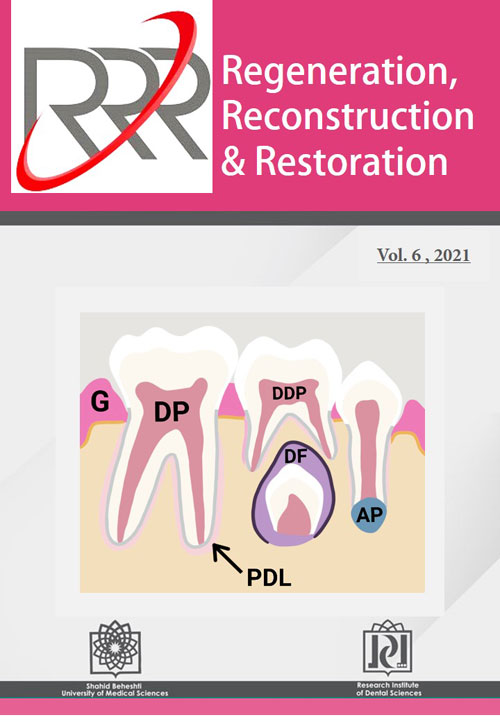Dental Pulp Stem Cells Behaviors Cultured on Collagen-coated Polyether Ether Ketone and Porous Tantalum
Reconstruction of large bone defects at the load bearing sites like spinal cord are still associating with major challenges. Although, currently two commercially available implants like porous tantalum and polyether-ether-ketone (PEEK) cage are employed for spinal fusion surgery, however, both PEEK and tantalum are suffered a key property of bioinert surface. By coating the surface of implants with collagen type 1, it is expected surface wettability and bioactivity of implants be increased and consequently effects on cells behavior. The aim of this study was to compare the attachment, proliferation and osteogenic differentiation capability of human dental pulp derived stem cells (DPSCs) cultured on either collagen coated polyether ether ketone (PEEK) and tantalum and bare ones.
Porous tantalum (Zimmer Company, USA) and PEEK (Abbott Spine, France) fragmented samples were treated by oxygen plasma irradiation following coated with collagen type 1 and seeded with dental pulp derived stem cells (DPSCs). Cells adhesion, proliferation, and osteogenic differentiation of DPSCs were evaluated on these both coated and non-coated scaffolds for up to two weeks by scanning electron microscopy (SEM) imaging, Alamar blue assay and alkaline phosphate (ALP) activity measuring respectively.
Alamar blue assay was performed and results over 5 and 7 days of culture showed that cell viability for collagen coated porous tantalum group at those days was higher than other ones. Likewise, ALP activity of cells which were seeded on scaffolds measured and interestingly, collagen coated tantalum group had highest amount over 7 and 14 days of culture. The adherence of DPSCs on the scaffolds was recorded after 3 days of culture by scanning electron microscopy (SEM) imaging. According to the SEM images, cells colonies and cells sheets were formed at the collagen coated porous tantalum and collagen coated PEEK surfaces respectively, whereas no cell attachments was seen at the surface of either bare tantalum or bare PEEK.
Our results, therefore, show that the collagen coated porous tantalum in comparison to coated PEEK or bare ones, possess better cells attachments and biocompatibility and could be considered for using as cell seeded scaffold for orthopedic in vivo studies.
- حق عضویت دریافتی صرف حمایت از نشریات عضو و نگهداری، تکمیل و توسعه مگیران میشود.
- پرداخت حق اشتراک و دانلود مقالات اجازه بازنشر آن در سایر رسانههای چاپی و دیجیتال را به کاربر نمیدهد.


